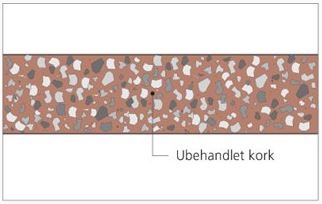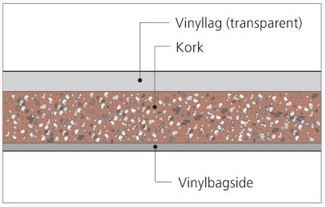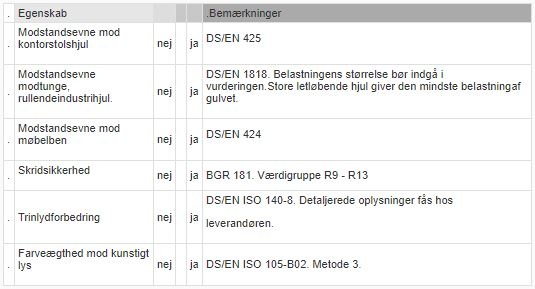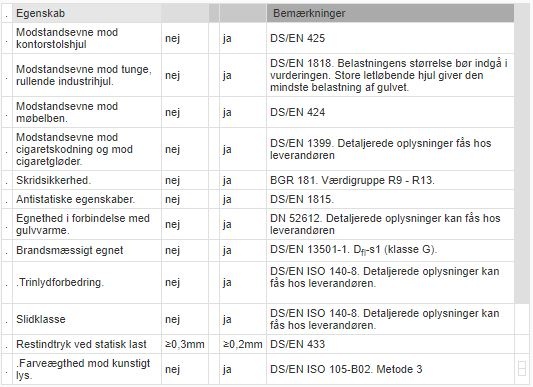- Home
- Good advice on flooring
- Floor coverings
- Elastic floor coverings
- Cork and vinyl cork
- Acoustic panels
- Tailored rugs
- Bamboo floor and boards
- BeefEater gas grill
- Table tops & table legs
- Design floors
- Tiles and clinker
- Good advice on flooring
- Carpets
- Floor heating
- Grass carpets
- Cork floors
- Kitchen, bath & wardrobe
- Laminate floors
- Linoleum floors
- Paint, Tissue & Putty
- Mats
- Needle felt and fair carpets
- Furniture
- Care products
- Remainders & good offers
- Stavparket / Sildebensparket
- Carpet tiles
- Terrace boards
- Accessories
- Wooden floors
- Product samples
- Vinyl flooring
- Tool
- Other products
- Ceiling and wall panels
- Nice floors
- Pine floor
- Click floors
- Ordered goods
-
Hot41% Off
-
Hot46% Off
-
Hot25% Off
-
Hot54% Off
-
Hot54% Off
-
47% Off
Cork and vinyl cork
All information on this page is copied material from Gulvfakta, which is a technical reference material, Source: Gulvfakta
Cork is a natural product made from the bark of the cork oak. Cork floors are supplied either as natural cork for varnishing or with an easy-to-clean and hard-wearing surface in the form of a clear vinyl.
1.3.3.1 Introduction
1.3.3.2 Properties
1.3.3.3 Requirements for the place of execution
1.3.3.4 Laying and use
1.3.3.5 Cleaning
1.3.3.6 Checklist 9, 10, 11 and 12
All information on this page is copied material from Gulvfakta, which is a technical reference material, Source: Gulvfakta
1.3.3.1 Introduction
Cork is used in dry rooms in schools, hospitals, offices, shops, homes etc. Cork floor coverings are supplied as tiles or as cork boards, i.e. laminated products, where the cork is glued to a base plate of MDF (wood fibreboard). Cork tiles are supplied either untreated in thicknesses up to 8 mm, or with a wear layer (and underside) of vinyl in a thickness of 3.2 mm. The thickness of the vinyl wear layer is 0.5 mm. The tile size is 300 x 300 mm. After laying, untreated cork tiles must be sanded and varnished according to the supplier's instructions.

Cork tiles with a vinyl surface have surface properties similar to vinyl, i.e. durable, easy to clean and with good resistance to water and most acidic and alkaline materials. However, long-term exposure to water should be avoided, as moisture can penetrate through the joints.

Cork boards are tongue and groove on all four sides and are supplied in sizes 900 x 185 mm and in thicknesses up to 12 mm. Cork boards are laid out loosely on top of the substrate, i.e. as a floating floor and assembled with the corkloc system (a click system) without the use of glue. Cork used as a floor covering must be CE marked. Cork that is used as a floor covering in escape routes and other areas with requirements for fire and smoke development must have documentation to meet the European fire class Dfl-s1 according to DS/EN 13501-1 (class G floor covering). Cork floor coverings are pleasant to stay on, as they are resilient and have good thermal comfort.
1.3.3.2 Properties
There are European standards for cork with vinyl and cork without vinyl, respectively.
Products that meet one of the European standards in the field must comply with specific requirements for:
• Length, width and straightness
• Dimensional stability during temperature changes
• Thickness and surface weight
For cork with clear vinyl, the following must also be provided:
• Thickness of the underside of the coating
• The density of the wear layer
• Peel the pull-off strength from the surface
For untreated cork tiles, the moisture content must be given.
Cork is classified according to area of application, with the thickness and density as primary parameters for the classification, for untreated cork tiles. For cork tiles with clear vinyl, the classification takes place with the thickness and thickness of the vinyl wear layer as primary parameters. Products of both types classified for use in "Erhverv Normal" can be used for office chairs on wheels and also comply with requirements for indentation marks.
In addition to the properties included in the classification, there may be a need to make requirements for other properties, depending on the current application. These properties are included in the floor industry's supplementary properties, which for cork floors include:
1.3.3.3 Requirements for the place of execution
Time must be set aside for the cork to acclimatise. This is done by placing it in unopened packaging at the installation site until temperature equilibrium has been achieved, which must be expected to take at least 24 hours, depending on temperature and humidity conditions.
During and after gluing cork, the temperature in the air and the subfloor must be 17 - 25°C and the humidity between 35 and 75% RH. The substrate must have the same flatness as required by the finished floor, normally ± 2 mm on a 2 m straight log. Flatness and floors, including requirements and measurement methods, are described in the section Technology and quality. If cork is to be laid directly on cast decks, the concrete's pore moisture (residual build-up moisture) must be no more than 85% RH. Moisture and floors, including requirements and measurement methods, are also described in the section on Technology and quality. There must not be strong drafts or strong sunlight during the laying of the floor. Cork tiles must be laid on an absorbent substrate to ensure that the glue adheres well to the substrate. If there is insufficient absorbency, e.g. on a substrate of asphalt or epoxy, a layer of suitable putty compound at least 2 mm thick must be applied.
1.3.3.4 Laying and use
Conditions in connection with laying and use
When cutting cork tiles for skirting boards, it is recommended that a joint of approx. 1 mm. This prevents the tiles from coming into contact with the panels during drumming, which can result in failure of the tiles' adhesion to the substrate.
1.3.3.5 Cleaning
The future users must be informed about correct cleaning, as incorrect cleaning can cause damage to the surface. The supplier's instructions on cleaning and maintenance of cork floors must be given to the user. Dry methods are preferably used for daily cleaning, i.e. dry or wet mopping or vacuuming. For stronger, occasional cleaning, mild detergents without strongly alkaline substances are used. Cleaning of cork floors is discussed in the section cleaning.
1.3.3.6 Checklist 9, 10, 11 and 12
Cork without surface treatment
Checklist 9. Properties included in the EN classification for cork tiles without surface treatment according to DS/EN 12104. Classification of cork for use in homes, business and industry is based on the thickness and density. The classes can be further divided into moderate, normal, high (and very high). Other properties comply with the marked values for EN-classified products. The specified values are minimum values.
Checklist 10. Additional properties that may need to be specified, e.g. due to special effects on the floor during the current use.
Cork tiles with clear vinyl wear layer
Checklist 11. Properties included in the EN-Classification for cork tiles with clear vinyl wear layer according to DS/EN 655. Classification of cork tiles for use in homes, business and industry is based on the thickness and the thickness of the wear layer. The classes can be further divided into moderate, normal, high (and very high). Other properties comply with the marked values for EN-classified products. The specified values are minimum values.
Checklist 12. Supplementary properties that may need to be specified, e.g. due to special effects on the floor during the current use.













